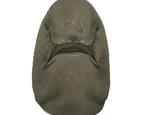Welcome to Gnathostome dental pattern and the evolution of chondrichthyan dentitions
This three-year NERC funded project will give new insight into the evolution and development of teeth and their arrangement in the mouth (‘dentition’) in jawed vertebrates (http://www.nerc.ac.uk/press/releases/2013/73-teeth.as).
The jawed vertebrates evolved into different types of animals, of which there are two major groups still living today. One is the cartilaginous fishes, or Chondrichthyes, while the other is Osteichthyes, or bony fish. One group of bony fish eventually evolved into mammals, like humans and mice (which are often used as laboratory models for human dentition). A functional dentition is the key to the evolutionary success of the jawed vertebrates, and to understand how teeth and dentitions evolved, we will investigate development of dentitions in living and fossil cartilaginous fishes, and compare our findings to basal osteichthyans such as the paddlefish and bichir.
Our team hope to discover whether these chondrichthyans and osteichthyans share a common dentition pattern despite having very different dentitions in the adult. We will use CT scanning techniques to generate 3D images of embryos and adult specimens of modern-day sharks and rays as well as the paddlefish and birchir. We will use 3D rendering software for visualisation, animation and analysis of these specimens (http://planetearth.nerc.ac.uk/multimedia/story.aspx?id=1521&cookieConsent=A). We are using micro CT scans taken at the Dental Institute KCL with a GE Locus SP, creating volumes with voxel sizes 6.5um, rendered using the software program Drishti (http://sf.anu.edu.au/Vizlab/drishti) and Avizo (http://www.vsg3d.com/avizo/overview).
Another research group involved in this project is based at the University of Sheffield, and will look at the genetics behind different types of tooth development and dentition. This will help us understand how dentitions are patterned as well as the genes are involved in the regeneration of shark teeth. This will give insight into comparable genes in humans, and why humans and mammals only develop one or two sets of teeth in their lifetime, compared to their animals such as sharks, which constantly regenerate their teeth.
Recent Pages
-
Alex Riley - 2014-11-12
Raw data from NERC-funded publications
-
Monique Welten - 2014-01-09
Research:
-
Monique Welten - 2014-01-06
The main objective of this project is to test alternative hypotheses:
Recently Added Literature
-
Monique Welten - 2014-09-05
-
Monique Welten - 2014-09-05
-
Monique Welten - 2014-09-05


